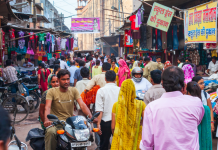The year 2016 has been a sanguine year for emerging markets after five brutal years of underperformance relative to the US, Europe and even Japan. The spectacular 70 per cent rise in oil prices since last February, a 20 per cent rally in gold and industrial metals, the failure of the Federal Reserve not to raise interest rates in four successive FOMC conclaves galvanised the asset class. In addition, political events like the impeachment of Brazil’s President Dilma Rouseff and the victory of the reformist BJP government in crucial state elections played a role creating a more benign macro outlook for emerging markets, as did stability in developing market currencies. While fears of Brexit and a Donald Trump win in the US election have led to a rise in global stock market volatility and risk aversion, investors in the Gulf should use the summer sell off to accumulate emerging markets where economic growth, earnings momentum and foreign inflows could all combine to create money making opportunities.
India story
India is the fastest growing major emerging market on the planet, with 7.6 per cent GDP growth at a time when Chinese growth is at 25 year lows and Brazil and Russia are in recession. Indian corporates operating profit has also begun to rise while the Reserve Bank of India (RBI) has stabilised the rupee, eased a liquidity crunch in the money markets and developed a credible anti-inflation regime. The Bankruptcy Code, a credible union budget, a strong monsoon after two years of drought, the RBI’s focus on bank asset quality reform and a five year low in both the central bank repo rate and the budget deficit are all bullish for India. While Indian equities are not cheap at 16.4 times forward earnings, well above the five year average ratio of 14 times projected earnings, global fund managers will continue to accumulate India on any dips. A 24,000 – 29,000 Sensex range seems entirely probable in 2016 and I expect the Indian rupee to trade in a 64 – 67 range. A positive G-Sec yield curve and rise in loan growth make me bullish on India’s private banks, notably ICICI Bank and HDFC Bank. A rise in rural incomes and civil servant wages is also positive for Mahindra & Mahindra and Maruti Suzuki.
South Korea is Asia’s cheapest major market, trading at 10 times earnings and one times book value. While the “Seoul discount” is justified by North Korea’s nuclear threat, the awful governance track record of the chaebol conglomerates and miniscule dividend yield, I believe South Korean equities are far too cheap at 1950 on the KOSPI. Of course, South Korea is called the Republic of Samsung for good reason, given that this chaebol generates one fifth of its economic output. A slump in global smartphone sales and memory prices have led to a “deep value” discount in Samsung Electronics below 1.4 mn won, with its free cash flow yield now almost 11 per cent. Samsung Electronics shares could well rise 25 per cent in the next twelve months as it is a memory supplier to the Apple iPhone 7.
Pakistan has been one of the world’s best performing frontier markets since 2011, with a compound annual return of more than 20 per cent in US dollars. Pakistani equities only trade at eight times earnings even though its military has decisively defeated the Taliban insurgents while interest rates have fallen to 43 year lows and bank credit, a mere 15 per cent of GDP, is set to revive. Bank credit in Sri Lanka and Bangladesh, comparable developing economies, is 30 per cent of GDP. Pakistan has secured a $6.7bn loan from the IMF and has a geopolitical “too big to fail” lifeline guaranteed by Washington, Beijing, Riyadh and Abu Dhabi, its four diplomatic and security allies. Pakistani equities were also upgraded to the MSCI emerging markets index, thus enabling global fund managers to accumulate shares in a consumption/services driven economy of 200 million people that could well generate 4.5 per cent GDP growth in 2016. Credit Suisse estimates potential 50 per cent upside in Pakistani equities on the MSCI upgrade.
The Philippines was Asia’s fairy tale emerging market as President Benigno Aquino broadened the tax base, created the fiscal discipline that led to successive sovereign credit upgrade cycles and led to a surge in offshore capital that rerated Manila equities to 18 times earnings, among the highest in the world. The Philippine’s vast remittance economy ($30bn), its demographic dividend (the world’s highest number of 12 year olds relative to the population) and its BPO industry ($25bn revenues, bigger than India) will make it an attractive emerging market under President Duterte, as long as he does not abandon Aquino’s fiscal/reform legacy and does not get ensnared in a geopolitical confrontation with China. Banks and property developers (BDO, Megaworld, and Ayala Land) remain the ideal proxies for one of the world’s great domestic consumption themes.
Incredibly, Turkey’s country fund in New York (symbol TUR) has risen seven per cent, despite the fall of the Turkish lira in the global currency markets. The fall in oil prices benefits the Turkish current account deficit, which has narrowed to four per cent of GDP. This reduces, but not eliminates, Turkey’s vulnerability to volatile offshore capital needed to finance its current account deficit. However, Turkish economic growth is threatened by the fall in Russian tourists due to rising tensions with the Kremlin and bomb blasts in Istanbul and Ankara engineered by terrorists in eastern Anatolia. The Turkish central bank has cut interest rates thrice in 2016, a positive for the stock market.
Russia’s central bank could also reduce interest rates by at least another 150 basis points in 2016. This prospect is bullish for the Russia country index fund (symbol: RSX) in New York, up 15 per cent in 2016 to date. Russian Eurobonds have been the planet’s best performing debt market since early 2015. At 5.6 times earnings, Russia the world’s cheapest emerging market.
Bet on emerging markets
To report this post you need to login first.






